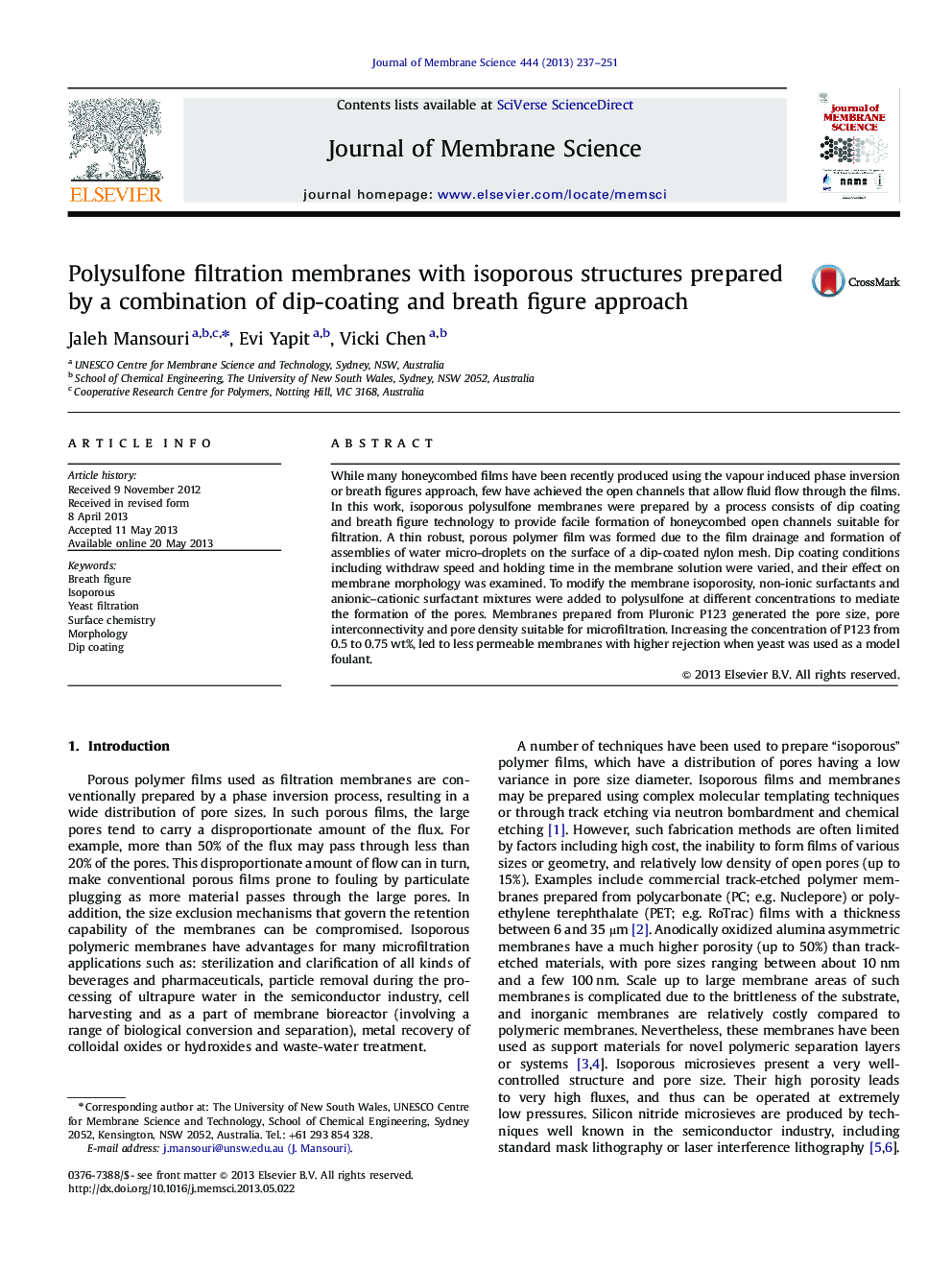| Article ID | Journal | Published Year | Pages | File Type |
|---|---|---|---|---|
| 7022497 | Journal of Membrane Science | 2013 | 15 Pages |
Abstract
While many honeycombed films have been recently produced using the vapour induced phase inversion or breath figures approach, few have achieved the open channels that allow fluid flow through the films. In this work, isoporous polysulfone membranes were prepared by a process consists of dip coating and breath figure technology to provide facile formation of honeycombed open channels suitable for filtration. A thin robust, porous polymer film was formed due to the film drainage and formation of assemblies of water micro-droplets on the surface of a dip-coated nylon mesh. Dip coating conditions including withdraw speed and holding time in the membrane solution were varied, and their effect on membrane morphology was examined. To modify the membrane isoporosity, non-ionic surfactants and anionic-cationic surfactant mixtures were added to polysulfone at different concentrations to mediate the formation of the pores. Membranes prepared from Pluronic P123 generated the pore size, pore interconnectivity and pore density suitable for microfiltration. Increasing the concentration of P123 from 0.5 to 0.75Â wt%, led to less permeable membranes with higher rejection when yeast was used as a model foulant.
Related Topics
Physical Sciences and Engineering
Chemical Engineering
Filtration and Separation
Authors
Jaleh Mansouri, Evi Yapit, Vicki Chen,
